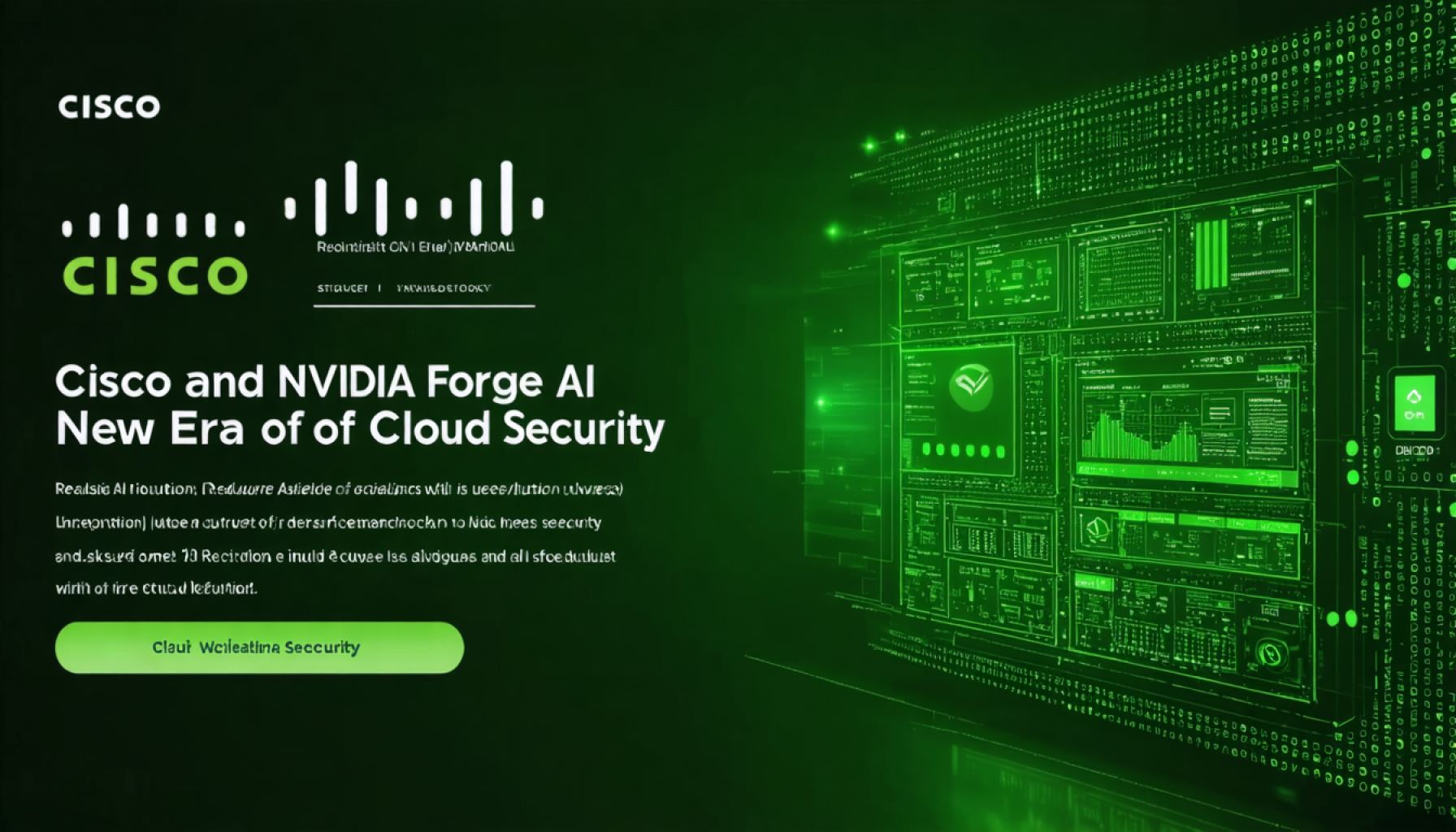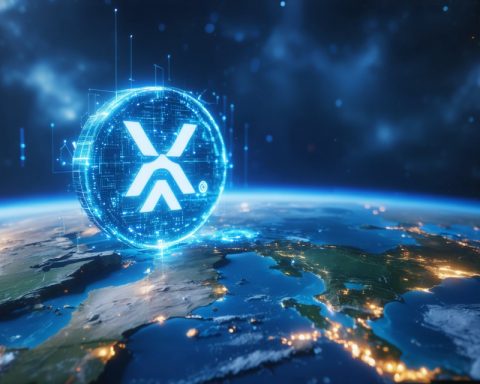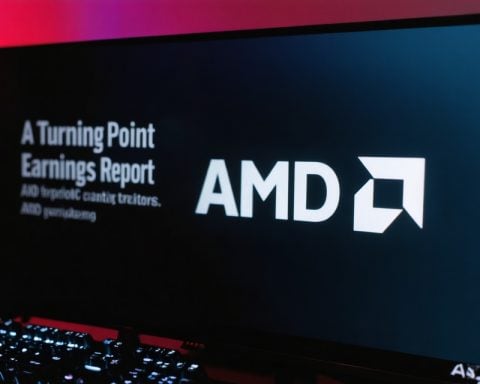- Cisco and Nvidia are revolutionizing AI-driven enterprises through a strategic collaboration using Nvidia’s Spectrum-X and Cisco’s Silicon One platforms.
- This integration offers seamless connectivity and agility across data centers, clouds, and users, enhancing AI workloads and simplifying enterprise operations.
- Advanced features like adaptive routing and telemetry, combined with Splunk’s fortified defenses, ensure resilient and secure digital infrastructures.
- Cisco’s Meraki for Government solution has obtained FedRAMP authorization, emphasizing the increasing importance of cloud security in the public sector.
- The collaboration positions Cisco and Nvidia as leaders in innovation, enhancing their market appeal and setting new benchmarks for enterprise technology.
Deep in the heart of technological innovation, Cisco and Nvidia are crafting what could be seen as a new dawn for AI-driven enterprises. Picture this: data center switches humming with the precision of the Nvidia Spectrum Ethernet platform, orchestrated in harmony with Cisco’s cutting-edge tech. The framework? A seamless fusion of Nvidia’s Spectrum-X and Cisco’s Silicon One, enveloping businesses in a tapestry of hyperfabric, Nexus, UCS Compute, and more.
This strategic ballet aims to bring clarity and agility to the often murky waters of AI workloads. Imagine enterprises equipped with the flexibility to dance between data centers, clouds, and users, effortlessly meeting demand without the usual cacophony of technical dissonance. By knitting together their frameworks, Cisco and Nvidia are offering enterprises a roadmap to navigate future pursuits with ease. The integration of adaptive routing and telemetry, alongside the fortified defenses of the Splunk data platform, promises not just connectivity but resilience in the digital landscape.
Simultaneously, in an era where security is more critical than ever, Cisco has secured a crucial U.S. government nod with FedRAMP authorization for its Meraki for Government solution. It’s a testament to how cloud security is becoming not just a necessity but an art form, curated under the watchful eye of the Cybersecurity and Infrastructure Security Agency.
The implications are vast. A confluence of robust technology and secure infrastructures signals a fertile ground for innovation, propelling companies to outpace competition in a rapidly advancing world. The result? A surge in Cisco’s market appeal, as investors flocked, buoyed by AI’s promise and a sturdy foundation in cloud security. In this coalition, the tech giants have lit a beacon, guiding businesses through the stormy seas of modernization.
Unlocking the Future: How Cisco and Nvidia Are Shaping AI-Driven Enterprises
How-To Steps & Life Hacks for Implementing Cisco and Nvidia’s AI Solutions
1. Analyze Your Current Infrastructure: Begin with a comprehensive assessment of your existing data center and networking infrastructure. Identify the gaps and potential areas for integration with Cisco and Nvidia’s offerings.
2. Pilot Deployment: Before full-scale deployment, initiate a pilot program. This involves integrating a small-scale version of Cisco’s Silicon One and Nvidia’s Spectrum-X into your operations to observe the outcomes and gather feedback.
3. Training and Skill Development: Invest in training your IT staff on the functionalities of hyperfabric solutions, Nexus, and UCS Compute platforms. Understanding these tools is crucial for optimizing their use and ensuring smooth operation.
4. Automate and Optimize: Utilize adaptive routing and telemetry to refine network traffic management. This will optimize performance across data centers and enhance the end-user experience.
5. Security Integration: Implement the fortified defenses provided by the Splunk data platform and leverage Cisco Meraki for Government if applicable. These solutions will secure data flows and ensure compliance with industry standards.
Real-World Use Cases
– Financial Institutions: Enhance AI-based fraud detection with real-time data analysis using the combined infrastructure of Cisco and Nvidia.
– Healthcare: Improve data processing speeds for AI diagnostic tools, allowing for faster and more accurate patient assessments.
– Retail: Employ AI-driven insights for personalized consumer experiences and supply chain optimization.
Market Forecasts & Industry Trends
The AI-driven enterprise market is projected to expand significantly, with estimates suggesting it could reach $190 billion by 2025, fueled by the increasing adoption of AI and cloud technologies. Cisco and Nvidia are at the forefront of this growth, providing foundational technologies that power these expansions.
Reviews & Comparisons
Cisco and Nvidia’s collaboration promises robust performance benefits, yet it’s worth comparing their solutions with those offered by other tech giants like Google Cloud’s AI infrastructure and Microsoft’s Azure AI. While Cisco and Nvidia focus on network and data center integration, competitors may offer broader cloud services with different pricing models and integrations.
Controversies & Limitations
One potential limitation is the dependency on new technology which may require significant investment. Additionally, enterprises might face challenges related to integrating legacy systems with advanced AI-driven infrastructures.
Features, Specs & Pricing
Though specifics vary, Nvidia Spectrum-X offers high-performance Ethernet networking while Cisco’s Silicon One is renowned for its programmability and efficiency. Pricing can depend on scale and specific enterprise needs, often structured around licensing fees and hardware costs.
Security & Sustainability
Cisco’s FedRAMP authorization for Meraki underscores its commitment to security, aligning with government standards for cloud security. Sustainability practices are also highlighted, with both companies focusing on energy-efficient technologies.
Insights & Predictions
Industry experts predict that AI integration in enterprise networking will continue to advance rapidly, with a strong focus on ethical AI applications and enhanced cybersecurity measures.
Pros & Cons Overview
Pros:
– Enhanced AI performance with seamless data center and cloud integration.
– Robust security framework aligning with governmental standards.
– Improved data processing efficiency and cost-effectiveness in the long run.
Cons:
– Requires significant upfront investment.
– Potential challenges with integrating into existing legacy systems.
– Demands ongoing training and skill development for IT staff.
Conclusion: Actionable Recommendations
– Assess Resource Availability: Evaluate your current resources and determine the feasibility of integrating Cisco and Nvidia’s technologies.
– Engage Experts: Work with consultants who specialize in AI infrastructure to minimize deployment risks and accelerate implementation.
– Continuous Learning: Encourage ongoing learning programs for your staff to keep up-to-date with advancements in AI and network technologies.
For more detailed insights into Cisco’s solutions, visit the official Cisco website. Similarly, explore Nvidia’s offerings at their Nvidia website. These resources can provide further guidance on their tech stacks and integration strategies.



















